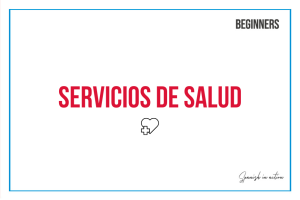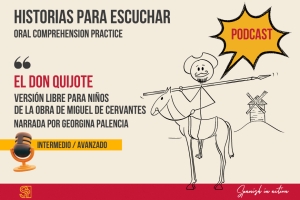If you want to produce Spanish confidently, quickly and accurately, you need to learn how to start thinking in Spanish. And, how to avoid translating each and every word in your head from English to Spanish.
Part of the problem is that there are many sentences in Spanish that we can translate exactly word-for-word because both languages have equivalent vocabulary and an identical sentence structure in this context. This happens a lot in Spanish which means students can get accustomed to finding word-for-word translations.
But, then there are situations where a word-for-word translation ends up a long way from where we need to be. Any student could be frustrated by a lack of consistency, logic or simple rules we can apply in several situations.
So, how do we deal with the contrast between sentences that we can translate word-for-word and the ones we can’t?
In other words, how do we start to think in Spanish?
To think in Spanish, stop translation
Probably the most important step in the process of starting to think in Spanish is letting go of the need to find exact word-for-word translations. Even though we all know this is easier said than done. But, it starts by acknowledging that word-for-word translations aren’t always accurate.
In any language there are similarities and differences. We have to take advantage of the similarities and recognize the unusual phrases or structures instead of searching for the best possible equivalent word-by-word translation in our language.
Every time you see a Spanish phrase with a translation that doesn’t line up exactly as you expect it would, ask yourself the following questions:
- Do I barely understand what the sentence means?
- Can I attempt to use the sentence in a conversation?
If your answer is affirmative to both of these questions, or even a ‘maybe’, then this is more than enough. Try the sentence out in a Spanish conversation and see if the native you are speaking with can follow you. Use the language without questions.
Probably you don’t have a deeply internalized understanding of what the Spanish sentence means in English. But, if you try to use it, and a Spanish native understands it, the process of letting go starts. Then, the use of the sentence becomes more familiar and comfortable. You are learning a structure that will help you to talk about an idea.The next step is to look for better ways to think about learning new Spanish structures.
Focus on HOW instead of WHY
A lot of students love to ask ‘why’ questions because it helps them spot patterns and understand what they are learning. But, does it really help?
Let’s analyze an example:
English: The afternoon, the day.
Español: La tarde, el día.
Student question: why is ‘afternoon’ feminine and ‘day’ masculine in Spanish, especially when ‘día’ ends in the letter ‘a’?
In Spanish the gender is assigned based on spelling, etymology, analogy or some other convention. And, there are exceptions to almost every case. The regular (and frustrating) answer is usually “exceptions” because a teacher does not want to go into useless explanations.The problem is if there is no good answer, it can leave you feeling frustrated. But, if there is a good answer to a ‘why’ question, knowing it may not actually help you with your Spanish goals. In other words, the information may not help a Spanish student when they need to use it in a Spanish conversation.
This is because knowing the answer to the ‘why’ question doesn’t necessarily assist in creating useful memory associations or improve a student’s knowledge of the actual phrase. Instead of asking ‘why’ questions, when you are learning a language, it is much more powerful for your memory, retention and understanding to ask ‘how’ questions.
For example, ask questions like:
How can I remember that ‘el día’ is masculine and ‘la tarde’ is feminine? Or, how can I get used to ‘el día’ being masculine and ‘la tarde’ being feminine? And, how can I use ‘el día’ and ‘la tarde’ in a Spanish sentence?
If you can come up with a good answer to these questions, you’ll end up with everything that you need. Also, the answers can be different for every student. And, they don’t have to be perfect. The key is that coming up with answers to these questions helps you remember what you need to know.
If we answer the ‘why’ question and learn that both ‘el dia’ and ‘la tarde’ are masculine and feminine because of their etymology, where they match their original gender in Latin, this doesn’t help us when we need to use these words in a Spanish conversation unless we already know Latin.
You have let go of the need to find exact word-for-word translations. And, you have started to ask ‘how’ questions for memory.
Of course you need grammar explanations and new vocabulary. In our institute www.spanishperfecto.com we can help you surely. But, language exposition, without questions, will master your skills and improve your Spanish thinking and instantly achieve fluency.
In essence, your ability to think in Spanish comes down to how well you have been exposed to the language and retained the ways that Spanish is different from English. And, to improve this, you need to keep learning and building your knowledge of Spanish in a systematic way. As well as using techniques such as letting go and asking better questions to retain what you have learnt.
See you!



